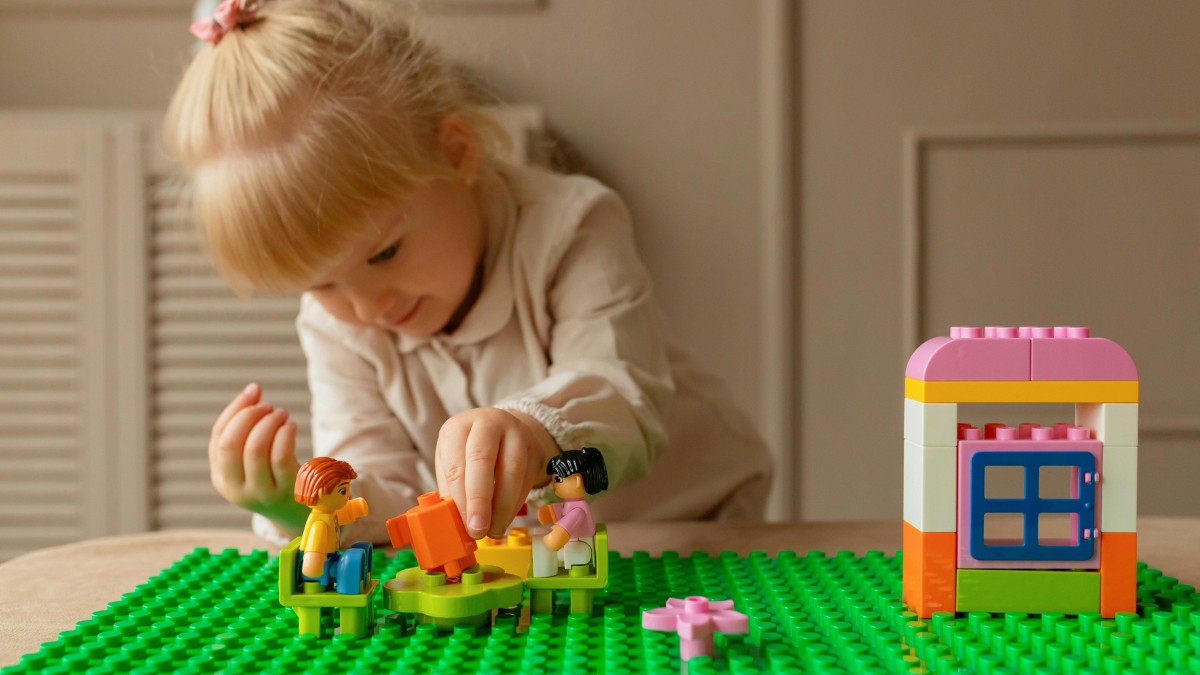What Does PDA Look Like in a Child?
PDA is a condition that falls under the autism spectrum. It is characterized by an extreme need to avoid demands and expectations, leading to anxiety, distress, and even aggression in some cases.
.jpg)
What Does PDA Look Like in a Child?
Understanding PDA in Children with Autism
In the realm of autism spectrum disorders, one subtype that requires attention and understanding is Pathological Demand Avoidance (PDA). PDA is characterized by a distinct set of behaviors and challenges that can manifest in children with autism. By gaining a deeper understanding of PDA, parents and caregivers can better support their children's unique needs.

What is Pathological Demand Avoidance (PDA)?
Pathological Demand Avoidance (PDA) is a term used to describe a profile within the autism spectrum characterized by an extreme avoidance of demands and requests.
Children with PDA often exhibit a strong need for control and struggle with following instructions or meeting expectations. This avoidance of demands can lead to high levels of stress and anxiety for both the child and those around them.
It's important to note that PDA is not officially recognized as a separate diagnosis in the Diagnostic and Statistical Manual of Mental Disorders (DSM-5). However, it is acknowledged as a distinctive behavioral profile within the autism spectrum, and understanding its unique characteristics is essential for providing appropriate support.
Key Characteristics and Behaviors of PDA
Children with PDA may display a range of behaviors and characteristics that distinguish them from individuals with other forms of autism. Some key characteristics of PDA include:
- Resistance to ordinary demands: Children with PDA often exhibit an intense need to resist and avoid demands or requests, even if they are simple or routine in nature. This resistance can manifest as refusal, argumentativeness, or even aggression.
- Surface sociability: Unlike some other forms of autism, children with PDA may possess good social skills on the surface. They may initiate social interactions, use eye contact, and engage in conversation. However, these social interactions may be driven by a desire to manipulate or control the situation, rather than a genuine connection.
- Anxiety and control issues: Children with PDA commonly experience high levels of anxiety due to the constant need to be in control of their environment and avoid demands. They may become overwhelmed by unexpected changes, transitions, or new situations.
- Masking and mimicry: Children with PDA often have a remarkable ability to mimic or imitate social behaviors and expectations. They may observe and copy the behavior of others in order to navigate social situations, but this can be exhausting and may not reflect their true feelings or abilities.
- Lability: Emotional lability, or rapid and extreme mood swings, is commonly observed in children with PDA. They may shift rapidly between different emotional states, making it challenging to predict or manage their reactions.
Understanding the unique characteristics and behaviors associated with PDA is crucial for parents and caregivers to provide appropriate support and interventions. By recognizing and addressing the specific challenges faced by children with PDA, it is possible to create an environment that promotes their well-being and helps them thrive.

Differentiating PDA from Other Autism Spectrum Disorders
Pathological Demand Avoidance (PDA) is a subtype of Autism Spectrum Disorder (ASD) that presents unique characteristics and behaviors.
Understanding how PDA differs from other ASD subtypes can help in accurately identifying and supporting children with PDA. Let's explore the distinctions between PDA, classic autism, Asperger's syndrome, and other subtypes of autism.
PDA vs. Classic Autism
While PDA is a type of autism, it differs from classic autism in several ways. Children with classic autism typically have difficulty with social communication and interaction, such as making eye contact or understanding social cues. They may also engage in repetitive behaviors or have narrow interests.
In contrast, children with PDA often have good social skills but struggle with demands and expectations. They may be able to make eye contact and engage in conversation but become anxious or distressed when faced with demands.
Another difference between PDA and classic autism is that children with PDA may exhibit different behaviors in different situations. For example, they may be able to complete a task at home but refuse to do the same task at school. This can make it challenging for parents and teachers to support the child's needs.
It is important to note that every child is unique, and there is no one-size-fits-all approach to supporting children with PDA or classic autism. A diagnosis can help families and educators understand a child's individual needs and develop strategies to support them.
PDA vs. Asperger's Syndrome
PDA and Asperger's Syndrome are both conditions that fall under the autism spectrum, but they have some important differences.
Asperger's Syndrome is characterized by difficulties in social communication and interaction, as well as repetitive behaviors or narrow interests. Children with Asperger's may struggle to understand social cues or make eye contact, and they may have trouble initiating or maintaining conversations.
In contrast, children with PDA often have good social skills but struggle with demands and expectations. They may be able to make eye contact and engage in conversation but become anxious or distressed when faced with demands.
Another difference between PDA and Asperger's is that children with PDA may use demand avoidance strategies to avoid situations that trigger anxiety, while children with Asperger's may have more difficulty adapting to change or unexpected events.
It is also worth noting that unlike PDA, Asperger's Syndrome has been officially recognized as a diagnosis in the DSM-5 (Diagnostic and Statistical Manual of Mental Disorders).
If you suspect that your child may have either condition, it is important to seek the advice of a medical professional for an accurate diagnosis. This can help you better understand your child's needs and develop strategies to support them.
PDA vs. Other Subtypes of Autism
PDA is just one of the many subtypes of autism spectrum disorder (ASD). While there are similarities between PDA and other subtypes, such as Asperger's Syndrome or classic autism, there are also important differences.
One major difference is that children with PDA have an extreme need to avoid demands and expectations, leading to anxiety, distress, and even aggression in some cases. In contrast, children with classic autism may struggle with social communication and interaction or engage in repetitive behaviors or narrow interests.
Children with Asperger's Syndrome may have difficulty understanding social cues or initiating/maintaining conversations, but they do not typically exhibit demand avoidance behaviors like those seen in PDA.
Another difference between PDA and other subtypes of autism is that children with PDA may use different strategies to avoid demands. For example, they may become aggressive or defiant or use humor or charm to get out of a situation. On the other hand, children with classic autism may simply withdraw from a situation altogether.
It is important to note that every child is unique and may exhibit a combination of symptoms from different subtypes of ASD. A diagnosis can help families and educators understand a child's individual needs and develop strategies to support them.
By differentiating PDA from other autism subtypes, you can gain a clearer understanding of your child's unique needs and provide the appropriate support and interventions.
Recognizing PDA in Children
Recognizing Pathological Demand Avoidance (PDA) in children is crucial for understanding their unique needs and providing appropriate support. By familiarizing yourself with the early signs and symptoms, common challenges and difficulties, as well as the impact on daily life and relationships, you can better navigate the journey of raising a child with PDA.
Early Signs and Symptoms
Identifying PDA in children can be challenging, as the symptoms may overlap with other autism spectrum disorders. However, some early signs and symptoms that may indicate PDA include:
- Extreme resistance to demands: Children with PDA often exhibit a strong aversion and resistance to everyday demands, even simple requests or instructions.
- Anxiety and avoidance: PDA is often accompanied by high levels of anxiety, leading children to avoid situations or activities that they find challenging or demanding.
- Social communication difficulties: Children with PDA may struggle with social interaction and communication, finding it challenging to understand and respond to social cues and expectations.
- Control-seeking behaviors: Children with PDA may engage in control-seeking behaviors as a way to manage their anxiety and regain a sense of control over their environment.
It's important to note that these signs and symptoms may vary in severity and can manifest differently in each individual. If you suspect that your child may have PDA, it's recommended to seek a professional evaluation for an accurate diagnosis.
Common Challenges and Difficulties
Children with PDA face unique challenges and difficulties that impact their daily lives and interactions. Some common challenges associated with PDA include:
- Difficulty with transitions: Transitions between activities or changes in routines can be particularly challenging for children with PDA, often resulting in heightened anxiety and resistance.
- Meltdowns and explosive behavior: Children with PDA may experience meltdowns, which are intense emotional outbursts triggered by overwhelming demands or expectations.
- Anxiety and emotional regulation: PDA is frequently accompanied by heightened levels of anxiety, making it difficult for children to regulate their emotions and cope with stressors.
- Challenges with social relationships: Establishing and maintaining social relationships can be challenging for children with PDA due to difficulties with social communication, understanding social cues, and managing social expectations.
Understanding these common challenges can help parents and caregivers provide the necessary support and accommodations to help their child navigate daily life more effectively.
Impact on Daily Life and Relationships
PDA can have a significant impact on a child's daily life and relationships. Some areas that may be affected include:
- School and education: Children with PDA may struggle in traditional school settings due to difficulties with following instructions, managing demands, and coping with the social and sensory aspects of the classroom environment. Individualized education plans and accommodations can help support their educational needs.
- Family dynamics: PDA can place strain on family dynamics, as parents and siblings may need to adapt their expectations and routines to accommodate the specific needs of the child with PDA. Open communication, patience, and support are crucial in strengthening family relationships.
- Friendships and social interactions: Children with PDA may find it challenging to form and maintain friendships due to difficulties with social communication and understanding social cues. Encouraging social opportunities and providing guidance on social interaction can support their social development.
By recognizing the impact of PDA on daily life and relationships, parents and caregivers can work towards creating a supportive and understanding environment for their child.
Strategies for Supporting Children with PDA
Supporting children with Pathological Demand Avoidance (PDA) requires a comprehensive approach that takes into account their unique needs and challenges.
In this section, we will explore three key strategies for supporting children with PDA: creating a supportive environment, using effective communication and interaction techniques, and collaborating with professionals and therapists.
Creating a Supportive Environment
Creating a supportive environment is essential for children with PDA. This involves understanding their specific triggers and providing a structured and predictable routine. Here are some strategies to consider:
- Flexibility: Recognize that children with PDA may struggle with transitions and unexpected changes. Minimize surprises and provide advanced notice when possible.
- Visual aids: Use visual schedules, charts, and timers to help children understand and anticipate daily activities. Visual supports can assist in reducing anxiety and increasing predictability.
- Safe spaces: Designate a calm and safe area where the child can retreat when feeling overwhelmed. This space should be a quiet and comfortable environment where they can engage in self-regulation techniques.
Communication and Interaction Techniques
Effective communication and interaction techniques are vital when supporting children with PDA. Here are some strategies to facilitate positive communication:
- Choice-making: Offer choices within reasonable limits to provide a sense of control. This empowers children to feel more engaged and reduces the likelihood of resistance.
- Negotiation and compromise: Use negotiation and compromise techniques to find common ground and avoid power struggles. Encourage open dialogue and validate their feelings and concerns.
- Clear and concise instructions: Provide clear instructions using simple language. Break down tasks into manageable steps and use visual prompts when necessary. Avoid vague or ambiguous requests that may lead to confusion or frustration.
Collaborating with Professionals and Therapists
Collaboration with professionals and therapists is crucial when supporting children with PDA. They can provide valuable guidance and expertise. Consider the following strategies:
- Seeking a diagnosis: If you suspect your child may have PDA, consult with a healthcare professional or specialist experienced in diagnosing and treating autism spectrum disorders. Early diagnosis can lead to more effective interventions and support.
- Individualized Education Plan (IEP): Work with your child's school to develop an Individualized Education Plan that addresses their specific needs. Collaborate with teachers, therapists, and other professionals to create a supportive learning environment.
- Therapeutic interventions: Consider therapeutic interventions such as Applied Behavior Analysis (ABA) therapy or occupational therapy. These interventions can help develop coping strategies, improve social skills, and manage anxiety associated with PDA.
By implementing these strategies, parents and caregivers can provide the necessary support and understanding for children with PDA. It's important to remember that each child is unique, and what works for one may not work for another. Be patient, flexible, and open to adapting your approach as you learn more about your child's individual needs and strengths.
Empowering Parents and Caregivers
Raising a child with Pathological Demand Avoidance (PDA) can be challenging, but it is important for parents and caregivers to prioritize their own well-being and seek support. By taking care of themselves, they can better support their child with PDA. Here are some strategies to empower parents and caregivers:
Self-Care and Emotional Well-being
Caring for a child with PDA can be emotionally demanding. It is crucial for parents and caregivers to prioritize self-care and take time for themselves. This can include activities that promote relaxation, such as practicing mindfulness or engaging in hobbies they enjoy.
Additionally, seeking support from mental health professionals or joining support groups can provide a safe space to share experiences and emotions. Taking care of their own emotional well-being allows parents and caregivers to be better equipped to support their child.
Building a Support Network
Building a support network is essential for parents and caregivers of children with PDA. Connecting with other parents who have similar experiences can provide a sense of understanding and validation.
Support groups, both online and in-person, offer opportunities to share strategies, ask questions, and gain valuable insights. It is also important to communicate with professionals who specialize in PDA. They can provide guidance, resources, and additional support tailored to the unique needs of children with PDA.
Advocacy and Education
Parents and caregivers play a crucial role in advocating for their child with PDA. It is important to become knowledgeable about PDA, its characteristics, and how it affects their child. This knowledge empowers parents to effectively communicate their child's needs to educators, healthcare professionals, and other individuals involved in their child's life.
By advocating for appropriate accommodations, modifications, and support, parents can help create an inclusive and supportive environment for their child. Additionally, staying informed about the latest research and evidence-based strategies for managing PDA can further enhance their ability to support their child's development and well-being.
By prioritizing self-care, building a support network, and advocating for their child, parents and caregivers can empower themselves to navigate the challenges of raising a child with PDA. Remember, seeking support is not a sign of weakness, but a demonstration of strength and commitment to the well-being of both the parent and the child.
FAQs
How is PDA different from other autism spectrum disorders?
While PDA shares some similarities with other autism spectrum disorders, such as social communication difficulties and sensory sensitivities, it is distinct in its extreme avoidance of demands and expectations. Children with PDA often use demand avoidance strategies to avoid situations that trigger anxiety or distress.
Is there a cure for PDA?
There is no known cure for PDA, but early diagnosis and intervention can help children develop coping strategies and lead fulfilling lives. Treatment typically involves a multidisciplinary approach, including speech therapy, occupational therapy, and behavioral therapy.
Can children outgrow PDA?
It is possible for children to develop better coping skills and reduce their symptoms over time with the right support and intervention. However, many individuals with PDA continue to struggle with demand avoidance and anxiety throughout their lives.
How can I explain PDA to my child's teachers or caregivers?
It can be helpful to provide information about your child's specific needs and triggers related to demand avoidance. You may also want to share resources or suggest training opportunities for teachers or caregivers who work with your child. It is important to advocate for your child's needs and work collaboratively with their support team.
Conclusion
In conclusion, PDA is a complex condition that can be challenging for both children and their families. However, with the right support and understanding, children with PDA can thrive and reach their full potential. By recognizing the signs of PDA and implementing strategies to support your child, you can help them manage their anxiety and lead a happy, fulfilling life.
Sources
- https://childmind.org/pathological-demand-avoidance-in-kids/
- https://www.aspriscs.co.uk/understanding-pathological-demand-avoidance-pda/
- https://kidshealth.org/en/parents/patent-ductus-arteriosus.html
- https://theactgroup.com.au/pathological-demand-avoidance/
- https://www.pdasociety.org.uk/family-life-intro/helpful-approaches-children/














